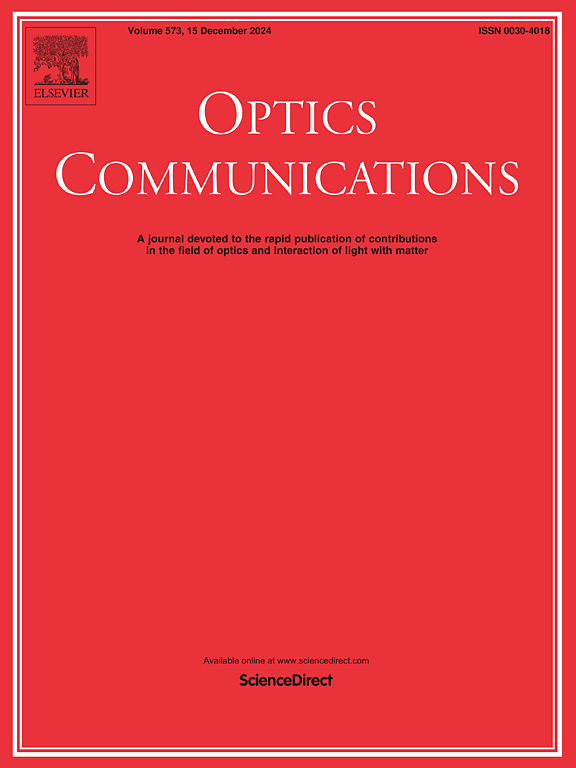Investigation of hybrid electron extraction architecture via integration of mono-shelled carbon nanotubes (MS-CNT) with perovskite oxide BaSnO3 for beyond 38% efficiency in BaZrSe3 photovoltaic cells
IF 2.2
3区 物理与天体物理
Q2 OPTICS
引用次数: 0
Abstract
This research centers on the numerical modeling and simulation of a photovoltaic cell, using the potential lead-free chalcogenide material, Barium Zirconium Selenide (BaZrSe3), as the light-harvesting layer. The design integrates mono-shelled carbon nanotube (MS-CNT) with the wide-bandgap perovskite oxide semiconductor Barium Stannate (BaSnO3) to form an innovative hybrid electron extraction composite layer (EECL), aiming to enhance the performance of the photovoltaic cell. A systematic investigation was conducted employing eight distinct hole extraction layers (HEL) to achieve optimal efficiency in conjunction with the BaSnO3 electron extraction layer (EEL). This study conducted a comprehensive investigation into device physics, incorporating various optimization strategies to address critical parameters such as layer thickness, bandgap, defect density (both interfacial and bulk), and dopant concentration. Furthermore, the analysis extended to evaluating the effects of temperature, auxiliary resistances (series and shunt), capacitance, conductance, and the Mott-Schottky contact behavior within the proposed model. Our study demonstrates that the proposed FTO/BaSnO3/MS-CNT/BaZrSe3/FeS2 chalcogenide photovoltaic cell (CPC) configuration, integrating mono-shelled carbon nanotubes (MS-CNTs) with the BaSnO3 electron extraction layer (EEL) and Iron pyrite (FeS2) as the hole extraction layer, achieves exceptional photovoltaic performance, attaining an optoelectronic conversion efficiency (OECE) of approximately 39.28 % and a short-circuit current density Jsc of 38.96 mA/cm2. This performance closely approaches the theoretical Shockley–Queisser limit, highlighting the promising potential of the design. It has been evidenced that mono-shelled carbon nanotubes (MS-CNTs) with a bandgap of 1.1 eV achieve optimal band alignment, promoting efficient charge carrier extraction and contributing to a significant open-circuit voltage (Voc) of 1.03 V. This work aims to stimulate further experimental investigations, providing essential insights to propel the advancement of chalcogenide photovoltaic cell technology.
求助全文
约1分钟内获得全文
求助全文
来源期刊

Optics Communications
物理-光学
CiteScore
5.10
自引率
8.30%
发文量
681
审稿时长
38 days
期刊介绍:
Optics Communications invites original and timely contributions containing new results in various fields of optics and photonics. The journal considers theoretical and experimental research in areas ranging from the fundamental properties of light to technological applications. Topics covered include classical and quantum optics, optical physics and light-matter interactions, lasers, imaging, guided-wave optics and optical information processing. Manuscripts should offer clear evidence of novelty and significance. Papers concentrating on mathematical and computational issues, with limited connection to optics, are not suitable for publication in the Journal. Similarly, small technical advances, or papers concerned only with engineering applications or issues of materials science fall outside the journal scope.
 求助内容:
求助内容: 应助结果提醒方式:
应助结果提醒方式:


